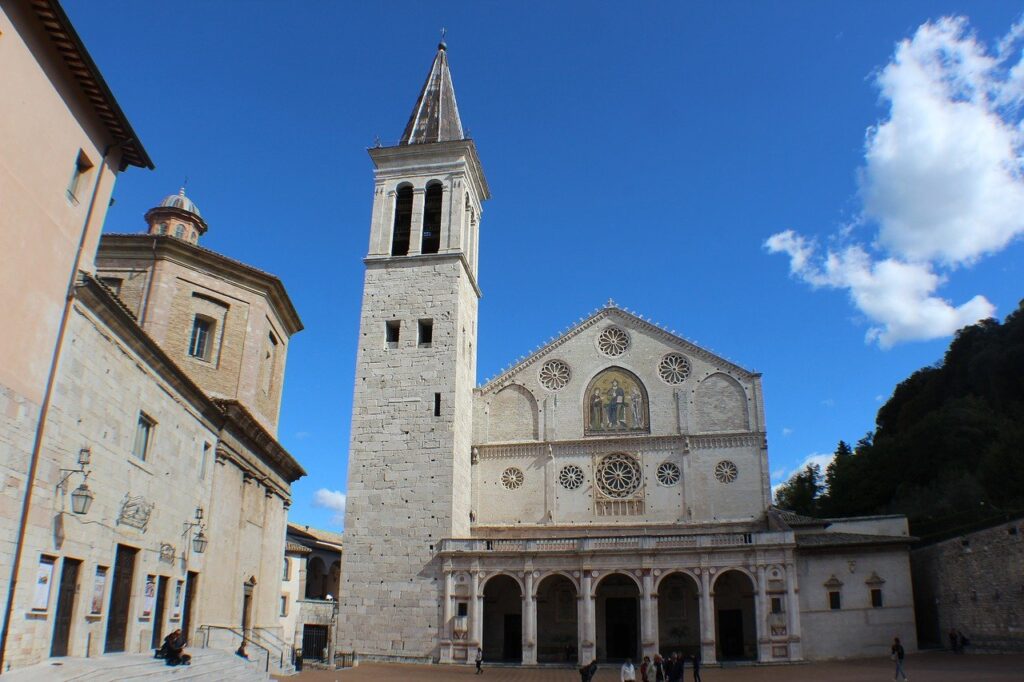Situated on a foothill of the Apennine mountains, Spoleto is an ancient city in Umbria with much to offer visitors — from the spectacular sight of the Ponte delle Torri aqueduct to the impressive Duomo of its cathedral, the Rocca Albornoziana fortress or even it’s world-famous summer festival (the Festival dei Due Mondi). There are plenty of restaurants for visitors to chose from too, with the town specialising in showcasing local, Italian dishes. You won’t be disappointed — but you will be spoilt for choice.

History
The city grew along the eastern branch of the famous Roman road leading from Rome across the Apennines to Rimini on the coast. As a result, the city is full of remains of its Roman past — from the 1st Century Ponte Sanguinario (the ‘bloody bridge’) to the 2nd Century Roman amphitheater. Under Lombard rule, the town became the capital of the Duchy of Spoleto and ruled over a significant proportion of central Italy. The town was later ruled by various Popes, fought over by the Guelphs and Ghibellines, and even Napoleon took charge until it was eventually captured and unified with the rest of Italy.
Events
Spoleto is famous for the Festival dei Due Mondi (Festival of the Two Worlds), which was founded in 1958. The idea behind the festival name was to showcase American and European culture within the same event — emboldened by a sister event held in South Carolina — and the event has evolved into a three-week festival of art, music, drama, and dance.
Art, Architecture, and Attractions
Spoleto has far more to offer than just Roman ruins — it boasts a mighty cathedral, complete with 12-13th Century Duomo, the beautiful Romanesque San Pietro extra Moenia church, and the Basilica of San Salvatore, a church incorporating a Roman temple and a recent addition to the UNESCO World Heritage site list.
Spoleto Cathedral
The Duomo is pretty impressive, but so are the views from the bell tower (well worth the hike up the 150 or so steps!).

Construction started in the 12th Century, and although it was later extended the style remains Romanesque.There’s also an app available to download so you can enjoy your own personal tour as you explore inside.
There’s also:
- Ponte delle Torri: this magnificent 10-arch bridge is stunning and visitors are able to walk across it.
- San Ponziano: this monastery and 12th Century church stands just outside the city walls and although it was later modified, the crypt is original
- The Roman theatre: this has mostly been rebuilt, and currently houses the National Archaeological Museum
- La Rocca Albornoziana: once used as a prion by the Borgia family, this fortress has been superbly restored and is well-worth visiting. The building also houses a modern-day museum, with artefacts and finds dating back to the Roman era. You have to pay for entry, but you can buy a ticket which permits entry to other museums within the town too
Fancy visiting this incredible area? View our villas in Umbria >


